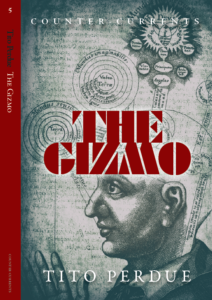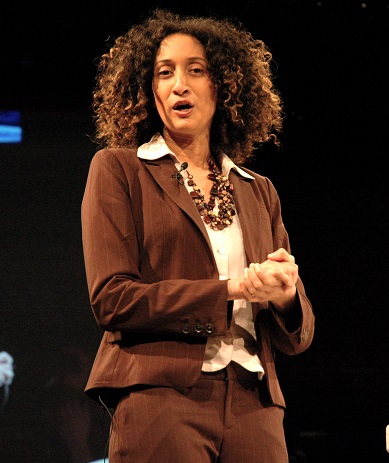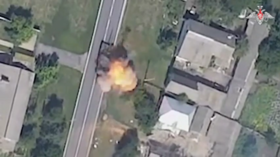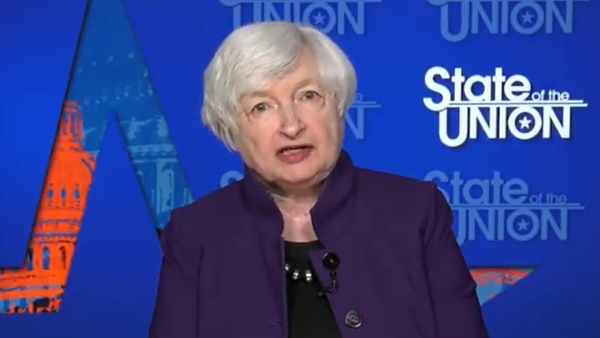Condemn! Denounce! Inform!
2,070 words
In recent years an attempt was made to reshape Britain on the model of a totalitarian dictatorship. We were constantly being urged to report each other to the authorities.
This was done by the government, which wanted us to denounce our neighbors if they left their houses more than once a day, and by the police, who did all they could to attract reports of “hate incidents.” As though we were not already feminized enough, we were encouraged to snoop and run to the authorities, supposedly for the sake of “safety” or “the vulnerable.” To maintain control, totalitarian regimes need to get the mass of citizens to enforce their rules, since there will never be enough police, secret or otherwise, to do the job on the scale required.
When in July 2020 the otherwise admirable headteacher Katharine Birbalsingh was interviewed about the historian David Starkey, she denounced him repeatedly. This followed Starkey’s “cancellation” after he had said that slavery did not amount to genocide, “otherwise there wouldn’t be so many damned blacks in Africa.”[1] He also referred to the “enormous” statue of Mary Seacole at St. Thomas’ Hospital, which at 16 feet high “completely overwhelms” that of Florence Nightingale elsewhere in London. Mary Seacole was not a nurse, he pointed out, but ran the officers’ mess in Crimea, “keeping the officers supplied with alcohol, brandy and cigars while Florence Nightingale was desperately trying to manage a great hospital, desperately trying to reform nursing, anesthesia and the whole business of antiseptics.” On the subject of crime in London, he said, “The people who kill young black men are other young black men.” His remarks, presumably after raising an outcry on Twitter, cost him his publishing contracts, academic honors, and position at Cambridge University.[2]
Katharine Birbalsingh didn’t doubt that he was a racist, and she could have made no more damning judgement. He apparently habitually suggested that all blacks were gangsters; had said that David Lammy, a black politician, sounded white; and screwed his face up when talking about black people. But his real trouble was his incorrigibility: “He’s never stopped, and people have pulled him up on this time and time again . . . and he’s never changed.”

You can buy Tito Perdue’s The Gizmo here.
When did we become unable to tolerate people thinking differently from ourselves and forget the idea of living and letting live? I suspect it happened when we were told that tolerance was all-important, just as our passion for judging people came in with the idea that we must not be judgmental. The good among us understood that these rules did not apply to them.
Birbalsingh didn’t like the way Starkey’s interviewer, Darren Grimes, had asked him what “we conservatives” could do about Black Lives Matter’s attempts to delegitimize British history. She knew lots of conservatives who wouldn’t equate those kind of antiquated and racist views with conservatism, she said. In other words, how dare Darren Grimes equate something with conservatism that her friends wouldn’t equate with it? “It’s really worrying,” she thought. According to the Russian specialist Frank Ellis, this was the way of the Soviets, who, “taking their lead from Lenin, expended vast amounts of energy attacking and damning ideological opponents.”[3]
Francis Foster, one of the pair interviewing her, weighed in. As she had acknowledged, David Starkey was a man of great intellect who had a lot to offer. What do you do with someone such as that when they have views she’d described as racist? Do we just put him away and forget about him, or do we try to rehabilitate him? The pipsqueak’s impudence was staggering. Assuming that it was for people like him and Katharine Birbalsingh to decide the fate of others, he wondered whether we should try to improve those who erred or just lock them up and throw away the key.
Birbalsingh said she was against cancel culture. If she were talking to black friends, she would try to persuade them not to make white people feel so uncomfortable that they never said anything, and were just worried all the time. “You know, don’t we want to hear what they have to say?” Yet, she wouldn’t want children to hear what David Starkey had to say: “There’s no question in my head that a man like that should not be teaching in a school.” Freedom of speech must be kept within limits, she thought. As she’d asked on Twitter, should we put holocaust deniers on TV? Why not? Why shouldn’t we hear what they have to say?
Also in 2020 there was an ever-intensifying campaign to get us to report hate incidents, which had the strange feature that it didn’t tell us what they were. I suppose it made it easier for us to think that we had just witnessed an example.
But it was amazing how conscientiously definitions were withheld. A lengthy e-mail from the police said that it sent a message that a stand was being taken against hate incidents.[4] A multi-party initiative had been created to encourage the reporting of them and to give people the confidence to come forward. But it didn’t say what a hate incident was.
The idea that more reports aren’t made because people lack the confidence to come forward had been in circulation for 35 years. Originally, the desired reports were of racial wrongdoing or sexual harassment; now they were of “hate incidents.” It never occurs to the police that the reason they don’t receive more reports could be that few incidents are occurring.
According to the e-mail, because most hate incidents were not reported, the police had joined forces with businesses and the county council to produce a free e-course on reporting them. That is how desperate they were to attract reports: They were training people how to make them, as though we might not know how to pick up the telephone. But they still didn’t define the things that we must report.
The e-mail continued with a councilor saying that this was a message of unity telling everyone that the authorities would stand together to tackle hate incidents. “There is absolutely no place for hate incidents of any kind in our society,” she said, adding that too many were not reported. She, too, failed to say what they were. It was like a campaign to get people to report cases of a dreadful disease without describing the symptoms. How were we supposed to know if anyone had got it?
Our Police and Crime Commissioner said that she has always insisted that she would not tolerate any form of hate incidents. She thought it “vital we unite together against hate incidents.” People must be “confident to report what they have experienced and understand we will deal robustly with any individuals or groups committing such crime.” Was this a clue? A hate incident was a crime? But no: “If you see something which you feel is wrong, don’t ignore it, report it.” A hate incident could be anything anyone felt was wrong. See someone crossing a road where you felt it should not be crossed, and you would have witnessed a hate incident.
It could not be just because these people were poorly educated that they saw no need to define hate incidents, since they all made the same omission. There had to be a motive: perhaps the thought that if the definition were disclosed we would see that hate incidents were rather rare instead of believing, as they seemed to want us to, that they were all around us. Or the definition could be crafted to find “hate” that wasn’t there.
The cagey e-mail was reminiscent of the way our Chief Constable had said that he hoped those who chose to flout the COVID guidelines would reflect on the number of cases in the county. He didn’t say what the number was, presumably because that day it was only 301, meaning that 99.97% of the county was unaffected. The information to which he pretended to refer had to be withheld to maintain the illusion of a crisis.

You can buy Leo Yankevich’s book, Tikkun Olam, here.
Back in the e-mail, our Assistant Chief Constable said that the police were “working closely with the County Council to make it easier for people . . . to report hate incidents.” Again, it had to be as easy as possible for us to report these “incidents,” but impossible for us to know what they were.
Such campaigns exist for two reasons. First, they help to break down social trust by making us wonder whether we are being reported and look for someone else to report as a defense. Secondly, they supply the government with statistics that can be used against politically disfavored groups, namely white men, who will turn out to be responsible for most reported “incidents.” Then the government will be able to say: “Look how many of these incidents are being perpetrated by this group!”, which will justify it in introducing new and harsher punishments.
The following year the news channel ITV suggested that vast numbers of hate crimes were being perpetrated against East and Southeast Asians.[5] In September, an engineer named Yuanzhao Zhang was shopping near his home in Cambridge when he was attacked by a gang that hurled racial slurs at him. He was beaten so badly that his face needed reconstruction surgery. There had been other incidents against East and Southeast Asians in the area, he said.
The idea seemed to be that white people were attacking Chinese people because the virus came from China. It was extremely unlikely that white people were attacking Chinese people for this or any other reason. The article didn’t mention the race of Yuanzhao Zhang’s assailants. Maybe they were black, black people having been found to be 16 times more racially aggressive than whites in Britain.[6]
According to a pressure group called End Violence and Racism, “Many incidents go unreported.” Official figures “almost certainly understate” the levels of hate crimes occurring. Here it was again. People weren’t stepping forward to make reports.
ITV mentioned a second victim: Member of Parliament Sarah Owen, who has Chinese heritage and said she received abusive messages on a day-to-day basis. But the incident that stuck out most in her mind occurred as she was leaving the Houses of Parliament, when a woman pointed at her and shouted, “Watch out, Corona’s about!” and laughed. If this was the worst that had happened to her, obviously there wasn’t much of a problem. But how many people would think that because the incident had been reported to the police and was now mentioned on the news, it must have been serious?
The article was part of a drive to portray white people as aggressive racists. Non-whites are encouraged to report whites so as to create the desired statistics, which are maximized by the term “hate crime” being defined so that such a thing has occurred when someone only “perceives” racial hostility or prejudice in an offense. No actual racial hostility or prejudice needs to have existed. Presumably, “hate incidents” are defined in a similar way.
The police collect reports, of which the media give out the number received, adding a claim from a pressure group that most incidents go unreported. Non-whites respond by making more reports, which presumably get more and more ridiculous, and so the scam goes on. It started in 1983, when the police adopted a definition of a racial incident that required no racial element in an incident; an allegation was enough.
Not only does a totalitarian government need the mass of citizens to enforce its rules; it needs to get a favored class among those citizens to describe itself as victimized by a disfavored class so that the government can appear justified in victimizing the disfavored class.
* * *
Like all journals of dissident ideas, Counter-Currents depends on the support of readers like you. Help us compete with the censors of the Left and the violent accelerationists of the Right with a donation today. (The easiest way to help is with an e-check donation. All you need is your checkbook.)
For other ways to donate, click here.
Notes
[1] Reasoned, June 30, 2020, “Dr David Starkey: Black Lives Matter Aims To Delegitimate British History.”
[2] Triggernometry, July 8, 2020, “Racism and Cancel Culture with Katharine Birbalsingh.”
[3] Frank Ellis, Marxism, Multiculturalism, and Free Speech (Washington, DC: Council for Social and Economic Studies, 20060, p. 90.
[4] Norfolk City Council, Oct. 5, 2020, “Norfolk says ‘Hate not welcome here’.”
[5] According to the article, a study shows that reported attacks rose by nearly 50% between 2018 and 2020, from 1,492 to 2,212 (ITV, Oct. 8, 2021, “Covid racism fuels rise in hate crimes against East and South East Asians.”
[6] In 1999 the Commission for Racial Equality stated that 18% of racial aggression in Britain was due to black people, who made up 1.7% of the population. Whites, at 94%, were responsible for under two-thirds of racially-motivated offenses. (Commission for Racial Equality, 1999, Racial Attacks and Harassment, CRE Factsheet, 1999, p. 4.)






